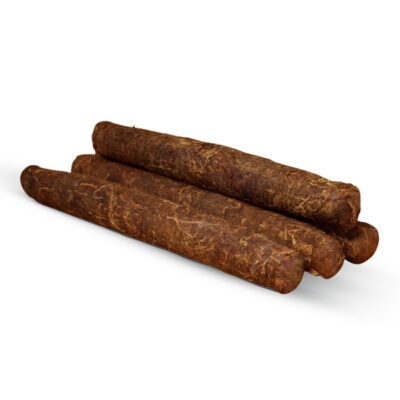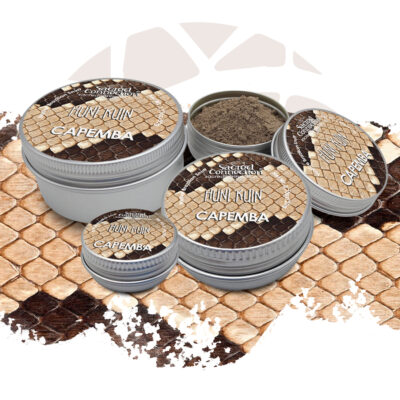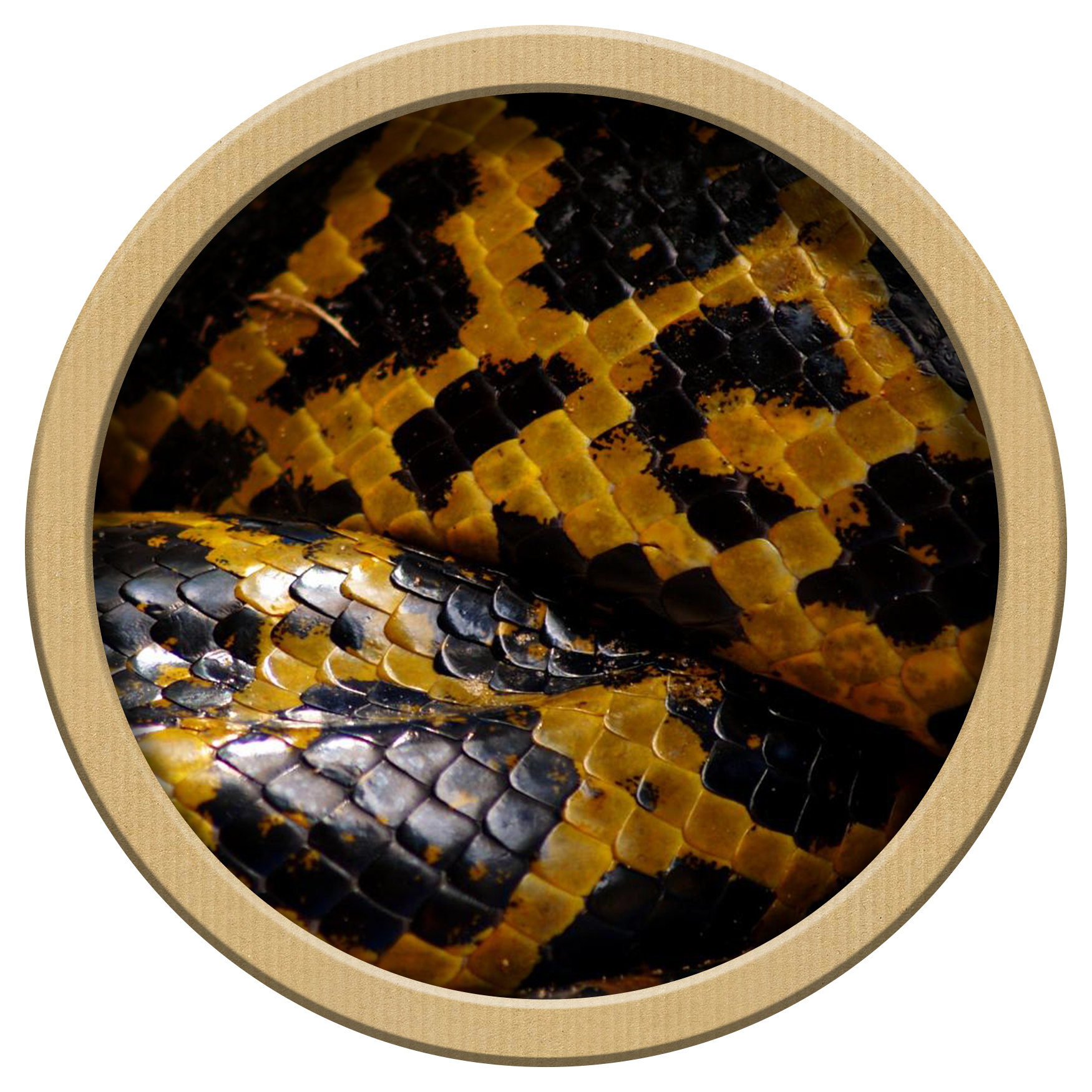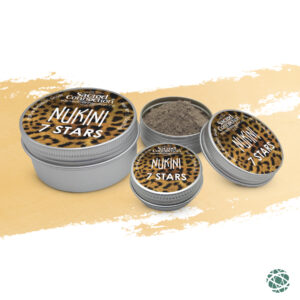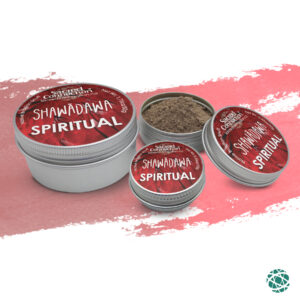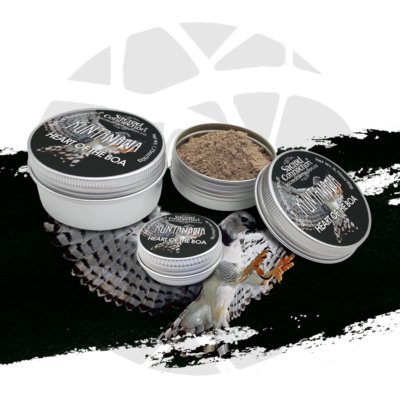¿Qué es el Rapé, dónde comprarlo y todos sus beneficios?
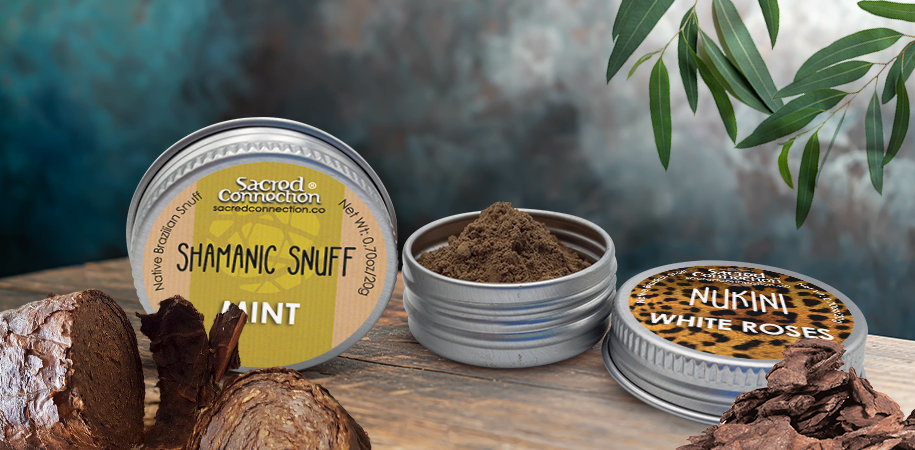
¿Qué es el rapé?
Un polvo fino que combina mapacho (un tipo específico de tabaco diferente del utilizado en los cigarrillos comunes y mucho más fuerte también) y cenizas de diversas plantas con otras hierbas medicinales y sagradas, el rapé es a la vez un rapé que aúna propiedades medicinales y aspectos espirituales, y una parte integral y sagrada de las culturas de ciertas tribus brasileñas.
La pronunciación correcta de rapé es "Hapey" o "Hapé". La R al principio de. una palabra en portugués se pronuncia como una H.
El ritual que ve el proceso de creación de la mezcla o combinación de rapé es muy sagrado, y requiere tiempo y esfuerzo de chamanes experimentados, así como un profundo conocimiento de cada componente, y reverencia y agradecimiento.
Aunque su ingrediente principal es el tabaco, las mezclas de rapé también contienen componentes como cenizas alcalinas de otras plantas, habas de tonka, brotes de clavo, cortezas de árboles, semillas y hojas; lo que entra en la mezcla variará en función de las intenciones de la ceremonia, así como de las tradiciones y la cultura de las tribus, cuya receta se transmite de generación en generación.
La fuerza del rapé dependerá directamente de sus ingredientes - algunas mezclas son incluso libres de tabaco, pero éstas no evocarán los mismos efectos limpiadores y enraizantes de otros rapés.
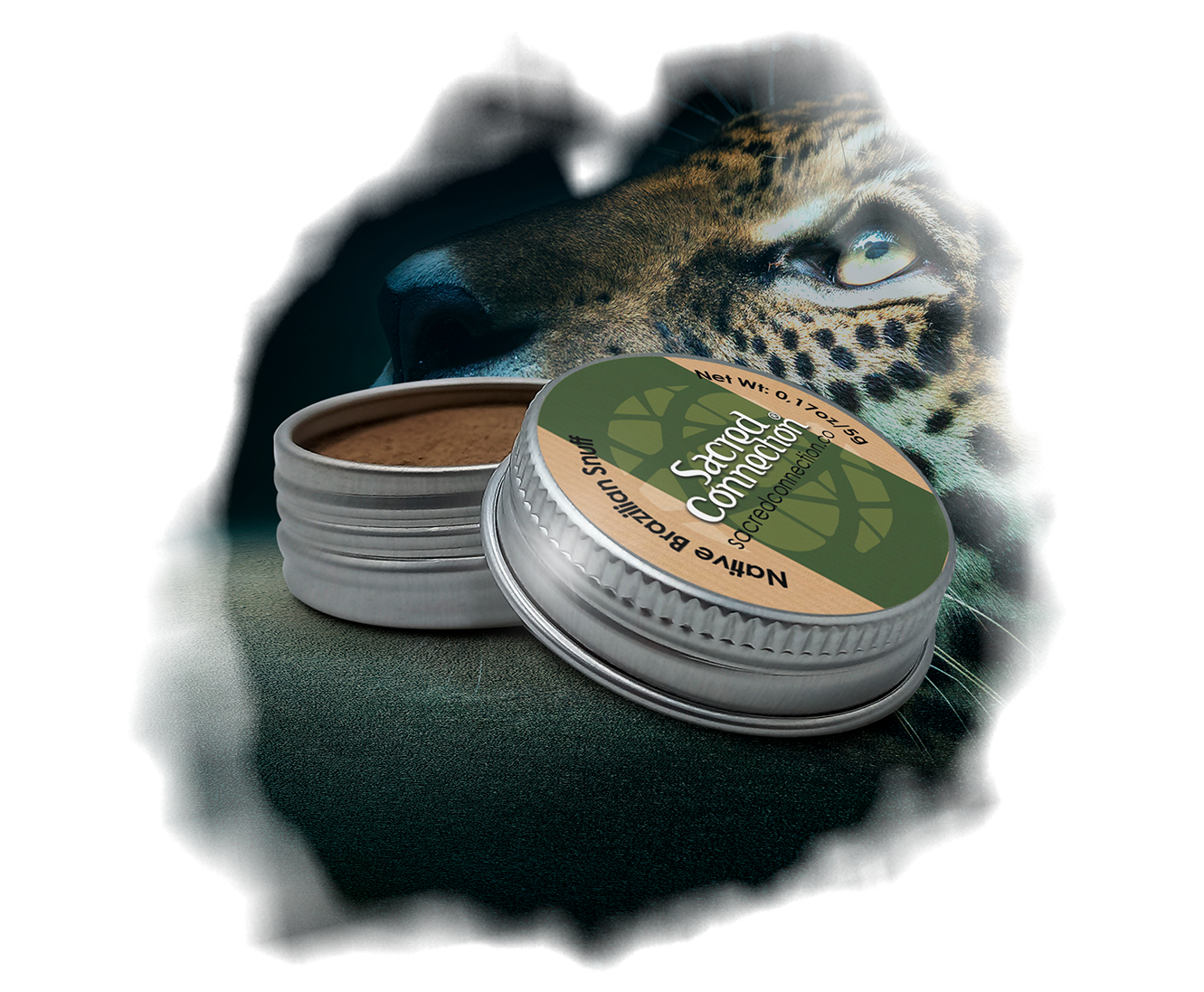
¿Para qué sirve el rapé?
Este rapé chamánico forma parte esencial de las prácticas sagradas y medicinales de varias tribus sudamericanas, veneradas con respeto y comprensión tanto de los aspectos físicos como etéreos y de los efectos que siguen a la ceremonia del rapé.
Considerando que existe una infinita posibilidad de combinaciones de ingredientes para las mezclas de rapé, además del hecho de que todos y cada uno de los usuarios establecerán sus propias intenciones para el ritual, también es seguro asumir que existen igualmente muchos propósitos para el uso de medicinas chamánicas como el rapé. Desde la limpieza de energía, el refuerzo de la inmunidad, la inducción de visiones, la conexión con uno mismo, la Tierra y los demás que participan en el rito sagrado, en el tratamiento de ciertos problemas respiratorios o digestivos, en la búsqueda de más claridad y respuestas a preguntas, la potenciación de los sentidos, y muchos más.
La frecuencia de uso puede variar en función de la tribu y las prácticas, y el tabaco sagrado puede utilizarse como parte de ritos colectivos en los que se comparte el rapé, y como parte de prácticas personales e individuales de limpieza y curación, muy distintas de la mala práctica y el mal uso del tabaco que a menudo vemos y correlacionamos con fumar en cadena.
Uso de la medicina rapé
El rapé medicinal se utiliza principalmente para desintoxicar y sanar el cuerpo físico. Hace maravillas para purgar el exceso de mucosidad, toxinas y bacterias y, debido a sus propiedades sanadoras y analgésicas, también es un potente agente en el tratamiento de infecciones y heridas, y en la reducción del dolor y la fatiga. Debido a que la nicotina forma parte de su composición, el rapé también actúa sobre el flujo sanguíneo al cerebro, mejorando el estado de alerta y la concentración. Es muy común que las personas que se sienten mal, estresadas, enfermas o incluso deprimidas busquen tratamiento en el rapé chamánico.
Muchas personas se preguntan cuánto dura el rapé. Varía con las dosis, pero normalmente el efecto más fuerte dura entre cinco y quince minutos. Si se toma una cantidad mayor o demasiado grande, puede durar bastante más. Empiece siempre con una cantidad pequeña.
Cómo utilizar el rapé
Algunas personas podrían pensar que, dado que el rapé contiene tabaco, hay que fumar el rapé. Como el polvo es tan fino, ya que los ingredientes se han machacado en un mortero y luego se han pasado una y otra vez por un paño fino, sería bastante difícil fumarlo. La forma correcta de tomar rapé es administrarlo por la nariz, como parte de una ceremonia (que también puede ir seguida de otras prácticas).
En primer lugar, y lo más importante, es esencial que las personas interesadas en hacer uso del tabaco medicinal, ya sea mediante el rapé, dediquen tiempo a comprender su finalidad y su significado cultural, así como a tener una visión educada de la ceremonia y a utilizarlo con respeto y consideración. Los chamanes necesitan años de aprendizaje para aprender a elaborar el rapé de su tribu, la administración del rapé y los rituales.
Pasemos ahora a detalles más técnicos. Aunque el rapé entra en el cuerpo a través de la nariz, no debe esnifarse ni simplemente inhalarse. En su lugar, se introduce una cantidad de la mezcla del tamaño de un guisante en un aplicador de rapé, o en una pipa, y se sopla en la nariz del sujeto; es importante intentar "retener" el rapé durante unos instantes antes de volver a soplarlo, que es un proceso que probablemente también se producirá de forma natural. Normalmente, es más fácil que un practicante experimentado o un chamán sople en la pipa (en este caso, llamada tepi que es más alargada) e introducir el rapé en las fosas nasales del otro.
Los que ya han vivido la ceremonia otras veces y están acostumbrados a la práctica pueden preferir una pipa personal, o un kuripeque tiene forma de V para que el tabaco pueda soplarse de la boca de una persona a su propia nariz.
Es importante que ambas partes reciban el rapé para lograr un equilibrio entre las cosas que uno desea soltar y lo que desea recibir y acoger, o todo el proceso podría resultar ligeramente contraproducente: el miedo y el rechazo de una parte del ritual podrían considerarse como un rechazo del espíritu del rapé.
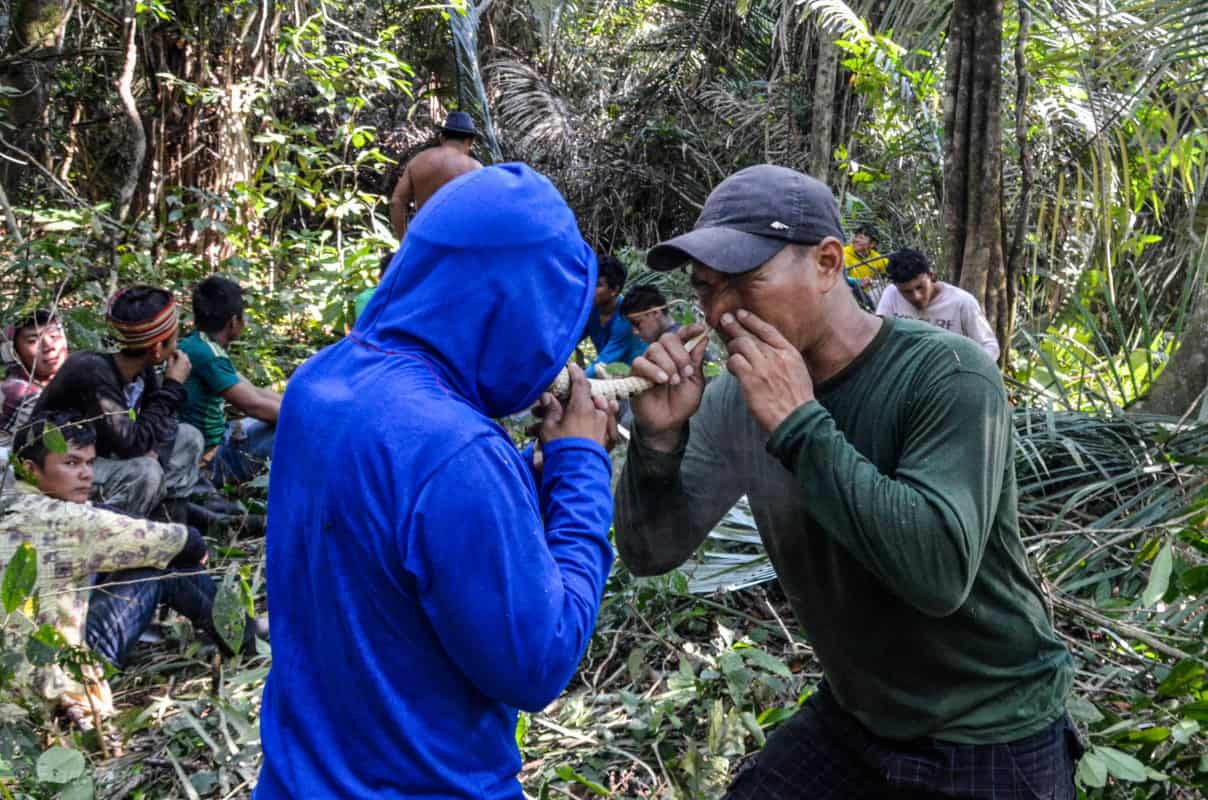
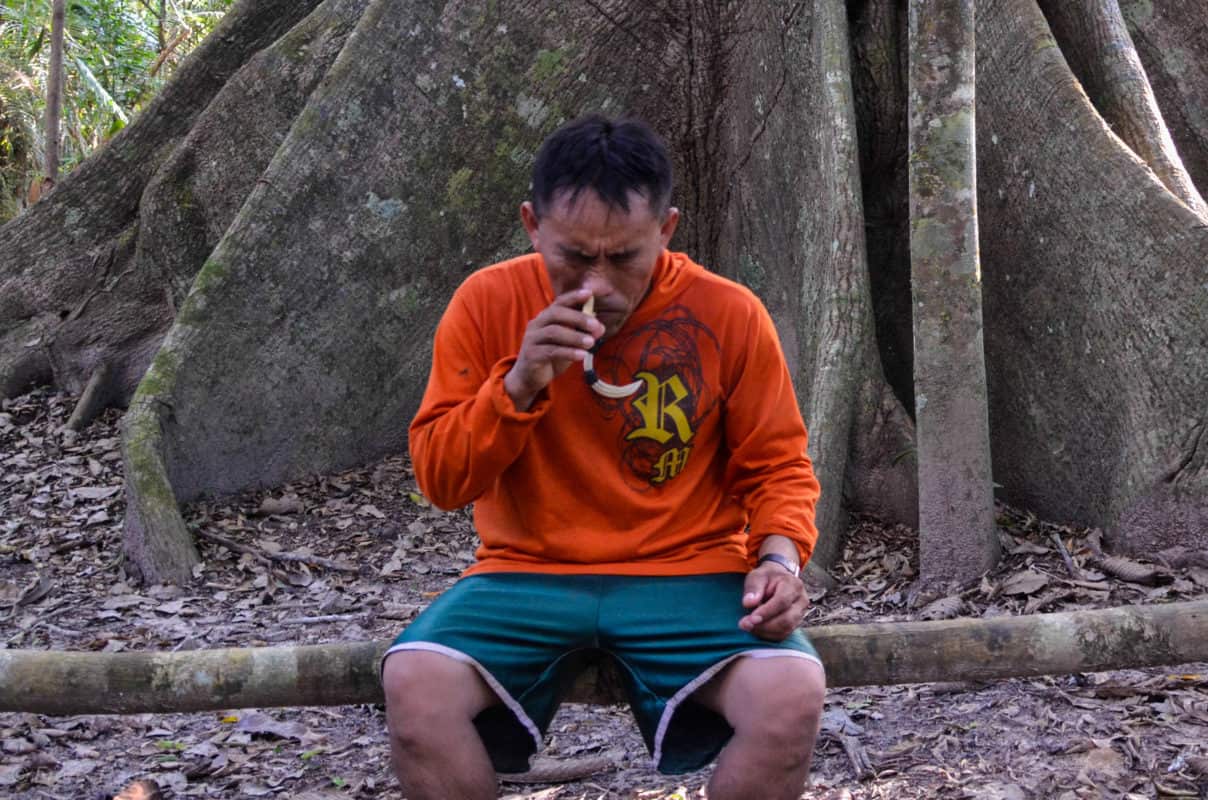
Descubra las tribus brasileñas que fabrican rapé
Hay una multitud de tribus brasileñas que tradicionalmente hacen uso del rapé, creando y transmitiendo de generación en generación sus propias mezclas de rapé y ritos que hacen uso de esta medicina chamánica - y por nombrar sólo algunas, están los Yawanawa, los Apurinã, los Kuntanawa, los Huni Kuin y los Nukini. No sólo varían las mezclas de rapé y las ceremonias, sino que también el propio acto de crear la mezcla puede ser distinto: las técnicas, las herramientas, la elección de las hierbas e incluso las canciones que se cantan en el proceso son únicas para cada tribu y, a veces, ocasión, lo que da como resultado una energía muy particular para cada tipo de rapé.
Descubra las tribus brasileñas que fabrican rapé
Hay una multitud de tribus brasileñas que tradicionalmente hacen uso del rapé, creando y transmitiendo de generación en generación sus propias mezclas de rapé y ritos que hacen uso de esta medicina chamánica - y por nombrar sólo algunas, están los Yawanawa, los Apurinã, los Kuntanawa, los Huni Kuin y los Nukini. No sólo varían las mezclas de rapé y las ceremonias, sino que también el propio acto de crear la mezcla puede ser distinto: las técnicas, las herramientas, la elección de las hierbas e incluso las canciones que se cantan en el proceso son únicas para cada tribu y, a veces, ocasión, lo que da como resultado una energía muy particular para cada tipo de rapé.
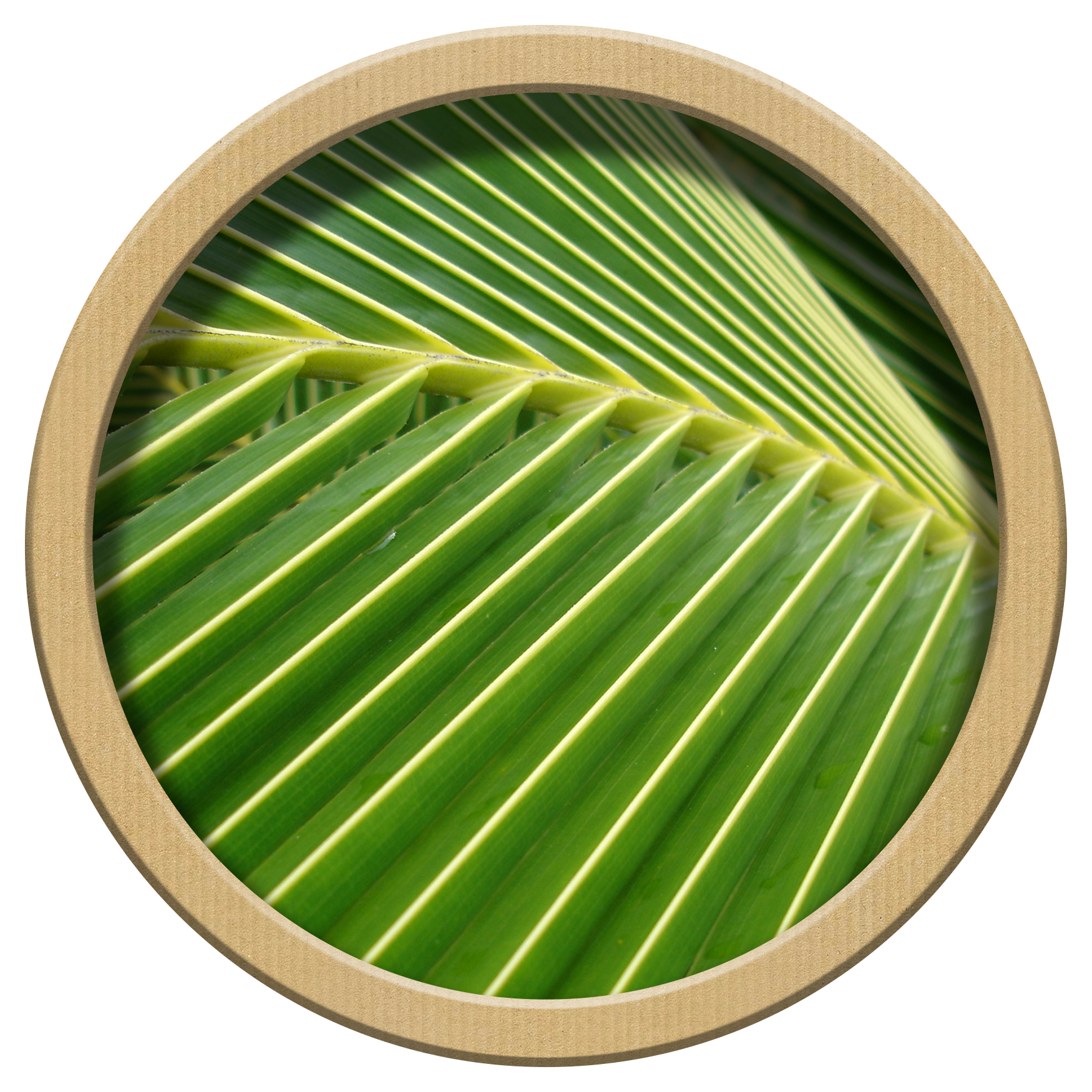
Apurinã
Su Rapé es el famoso Rapé verde tan típico de su tradición, elaborado con la hierba local llamada Awiry...
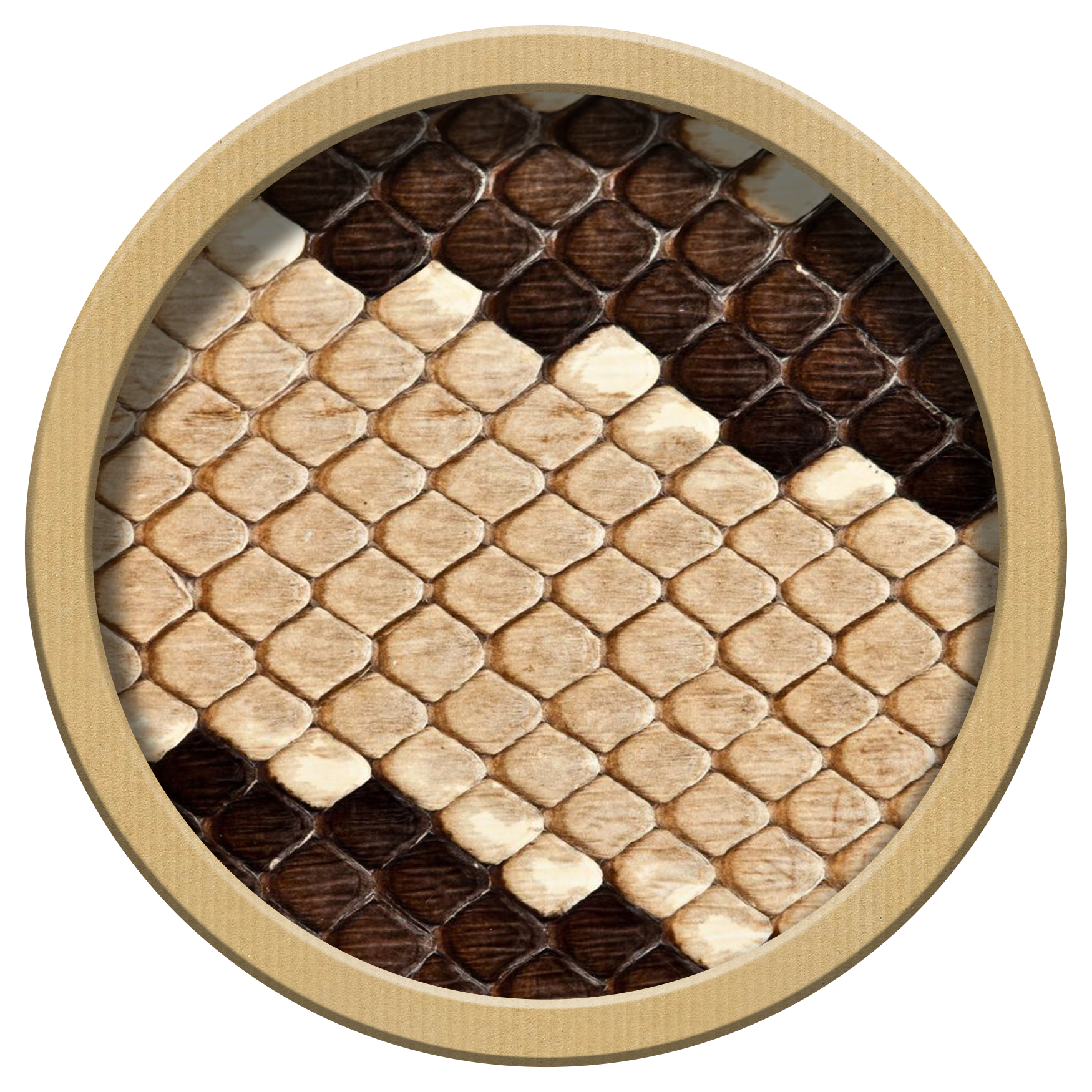
Huni Kuin
El nombre Huni Kuin significa el Pueblo Verdadero, pero se les conoce más comúnmente como los Kaxinawa...
Tipos de rapé
Existe una gran variedad de rapés, tan diversos y únicos como las tribus que crean las mezclas. El nombre de cada rapé chamánico suele estar compuesto por el nombre de la tribu de sus orígenes, y a veces incluso por el nombre del chamán que lo ideó, y a veces hace referencia a algunos de los componentes de las mezclas. Existen rapés tribales, mezclas, rapés ceremoniales e incluso alternativas sin tabaco. Algunas mezclas serán más adecuadas para los usuarios principiantes, mientras que otras las utilizarán más a menudo quienes se hayan acostumbrado a su uso; algunos polvos tendrán colores más claros, mientras que otros parecerán más oscuros; esta distinción se debe sobre todo a las hierbas y plantas utilizadas en la elaboración del rapé, así como a los procesos y el tiempo empleados en su producción.
En Yawanawa Tsunu podría considerarse un clásico entre la variedad de rapé. Las cuerdas de tabaco de alta calidad hechas a mano (también llamadas cordas) y cenizas de corteza de Tsunu entran en esta afamada mezcla. Sus principales efectos esperados son el aumento de la fuerza física y espiritual y una poderosa curación, así como una limpieza energética y una sensación de reconfortante calidez.
El rapé Caboclo lo elaboran personas de ascendencia mixta: indígenas brasileños y europeos, combinando energías distintas en algo único y poderoso. El Caboclo Paricá se compone principalmente de tabaco rústico y ceniza de corteza de Paricá, que también recibe el nombre de Xinshá. El tabaco utilizado en esta mezcla puede parecer más fuerte que la mayoría de las demás variedades.
Una mezcla que ofrece fuerza y poder femeninos es el Nukini Rosa Branca (que significa Rosa Blanca, símbolo de pureza), utilizada tradicionalmente en la cultura brasileña como componente de los baños de hierbas por sus propiedades calmantes y de limpieza del aura. Es un rapé delicado pero fuerte, pensado tanto para nutrir como para relajar.
Con fines ceremoniales y espirituales, el Shawadawã Espiritual rapé es una opción sublime. Parte de la selección de mezclas de la tribu Shawadawã, las hierbas Kapayuba (que se utilizan para iluminar y amplificar las visiones durante las ceremonias) entran en su creación. Aunque sus efectos principales son los que se esperan de la ingesta de la mayoría de tipos de rapé, este rapé Shawadawã conlleva una gran conexión con las fuerzas espirituales, a menudo utilizado junto con la ayahuasca y los cantos curativos.
El Rapé Apurinã es la ausencia de tabaco (tenga en cuenta que la ausencia de tabaco en la producción no significa necesariamente una ausencia absoluta de nicotina) en la mezcla - de hecho, ni siquiera es una mezcla, ya que los Apurinã utilizan sólo la planta Awiry para crear este rapé, de ahí el nombre prestado para el rapé. El bello y singular color verde de este rapé procede de la planta Awiry, que sólo puede recolectarse durante las estaciones secas, cuando las aguas de los ríos se retiran y la planta puede cosecharse, lo que hace que este rapé sea aún más especial.
¿Dónde comprar rapé?
Aprender más sobre el rapé es sólo una parte del proceso de iluminación que te ayudará a crecer como persona y a sentirte mejor contigo mismo con la ayuda de la medicina sagrada. También es muy importante tratar siempre de adquirir tu rapé, así como cualquier otra medicina natural, de fuentes reputadas y fiables que trabajen junto a tribus y comunidades que muestren respeto y aprecio por lo que la Naturaleza tiene que compartir con nosotros.
[col span__sm="12"] [ux_product_categories style="default" columns="6" slider_nav_style="simple" slider_nav_color="light" slider_nav_position="outside" slider_bullets="true" ids="79,101,102,103,104,105,106,182,553,107,108,217,183,184,89,82,551,84,200,97,94,96,552" orderby="name" order="desc" show_count="0" image_radius="100" image_overlay="rgba(0, 0, 0, 0.203)" image_hover="overlay-remove-50" image_hover_alt="glow" text_size="large" text_hover="bounce" text_padding="0px 0px 0px 0px"]. [/col] [col span__sm="12"] [ux_text font_size="1" line_height="1.85"]
-
Rapé, Rapé Sagrado, Yawanawá Rapé
Puntuación: 5,00 de 5$14.00 - $90.00 Seleccionar opciones Este producto tiene múltiples variantes. Las opciones se pueden elegir en la página del producto -
Rapé Nukini, Rapé, Rapé Sagrado
Puntuación: 5,00 de 5$14.00 - $90.00 Seleccionar opciones Este producto tiene múltiples variantes. Las opciones se pueden elegir en la página del producto -
Rapé, Rapé Sagrado, Rapé Shawãdawa
Puntuación: 5,00 de 5$14.00 - $90.00 Seleccionar opciones Este producto tiene múltiples variantes. Las opciones se pueden elegir en la página del producto -
Rapé Kuntanawa, Rapé, Rapé Sagrado
Puntuación: 5,00 de 5$14.00 - $90.00 Seleccionar opciones Este producto tiene múltiples variantes. Las opciones se pueden elegir en la página del producto
Efectos y beneficios del rapé
Desde el punto de vista físico, en cuanto se sopla el polvo en la nariz, lo más probable es que la persona experimente una sensación de ardor alrededor de la zona central de la cara, junto con ojos llorosos y una sensación de hormigueo/tensión en la zona conocida como el tercer ojo o chakra de la coronilla; otro efecto inicial común es, por supuesto, estornudar debido a una ligera irritación en la cavidad nasal, lo que probablemente provoque la limpieza de las vías respiratorias y el posterior goteo de la nariz, liberando de mucosidad las cavidades y la zona frontal de la cabeza. Este proceso puede provocar dolores de cabeza y, a veces, incluso un cierto grado de dificultad para respirar si la zona está excesivamente obstruida. Si la zona de la garganta también está obstruida, hay muchas posibilidades de que el rapé también provoque su expulsión, e incluso puede provocar náuseas y vómitos, pero es importante recordar que todo esto forma parte natural del proceso y debe considerarse como una forma de lograr la liberación de la tensión y de todo lo que es tóxico para el propio cuerpo. Quien toma rapé puede esperar concluir el rito sintiéndose más tranquilo y a la vez más centrado que antes, y en contacto más estrecho consigo mismo y percibiendo mejor el potencial del mundo que le rodea.
El rapé también es una herramienta espiritual muy poderosa para limpiar y conectar con las intenciones y los pensamientos propios, ayudando a realizar oraciones más potentes y a concentrarse y ser más consciente de uno mismo y de su entorno, abriendo puertas a una comunicación y un pensamiento más elevados. Trabaja estrechamente con las intenciones del usuario, por eso es tan importante que el individuo se dedique plenamente a los rituales y procesos del rapé (incluso hay una preparación adecuada antes de la propia ceremonia). Este rapé sagrado amplificará cualquier intención: ya sea de protección, poder, paz, comprensión, conexiones; cualquier energía que esté presente durante la ingesta se perpetuará en el proceso a medida que el rapé entre en el cuerpo y cualquier otra cosa que haya que soltar será expulsada de la mente.
Unificando ambos aspectos, el uso del rapé tendrá como resultado el equilibrio y la renovación. La purga de sustancias "atascadas" en el cuerpo puede considerarse una representación material y sincrónica del proceso espiritual de librarse de la energía tóxica, vieja y negativa. La nicotina presente en la mezcla provocará un aumento de la producción de dopamina, acetilcolina y epinefrina, lo que conducirá a la relajación y la tranquilidad y, al mismo tiempo, a un estado más alerta y consciente (que está lejos de la ansiedad y la angustia); en otras palabras, provocará una sensación de vigorización y equilibrio, ya que estarás a la vez enraizado y estimulado.
¿Cuánto duran los efectos del rapé?
Los efectos inmediatos del rapé (esa repentina sacudida y paradójica sensación de alerta enérgica y relajación tranquilizadora) sólo pueden producirse un par de minutos después de la ingesta. Pero no se preocupe, la maravillosa sensación de equilibrio, limpieza y renovación le acompañará durante varias horas, o incluso varios días. Gracias a sus propiedades inmunoestimulantes y a su poder de limpieza espiritual, el rapé le ofrecerá una sensación de rejuvenecimiento y fomentará un sentido más agudo de aprecio por las cosas buenas que le rodean.
Sobre la legalidad del rapé
Rapé/Shamanic Snuff/Rapé Snuff es legal en los EE.UU. siempre y cuando los componentes del producto no contengan agentes alucinatorios, ni rastro alguno de dichos componentes.


